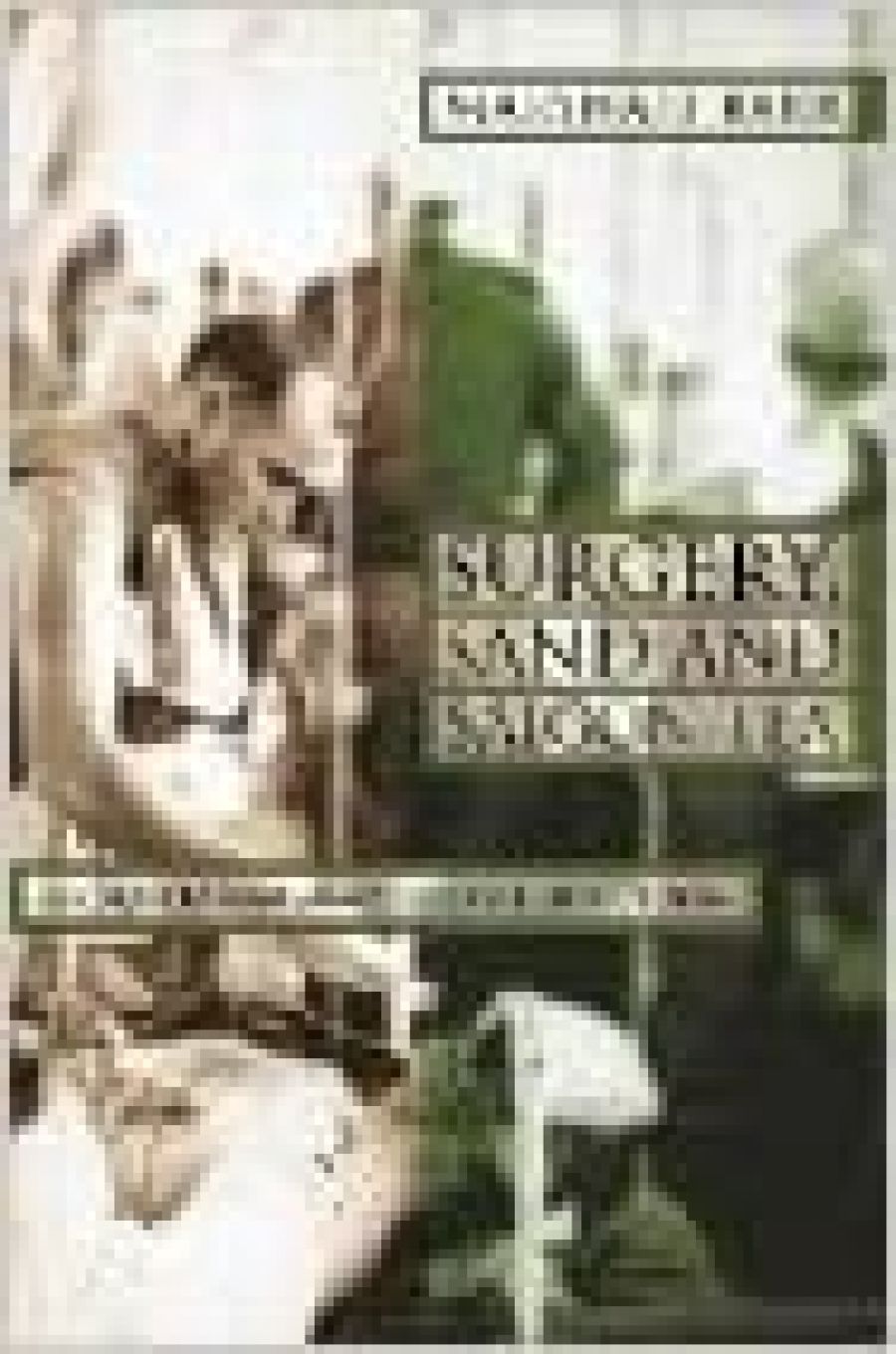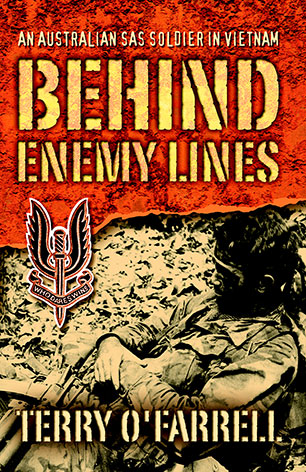
- Free Article: No
- Contents Category: War
- Review Article: Yes
- Article Title: Vietnam Memoirs
- Online Only: No
- Custom Highlight Text:
Despite Australia’s heavy involvement in wars throughout the twentieth century, few notable war memoirs by Australians have emerged. Frederic Manning (The Middle Parts of Fortune) and Richard Hillary (The Last Enemy) identified as Englishmen, despite being born here. A.B. Facey’s A Fortunate Life and Don Charlwood’s No Moon Tonight are literary benchmarks against which Australian soldier–writers must measure themselves. Allen & Unwin is doing an invaluable job with its extensive series of Vietnam memoirs. Whether any of them will become classics, only time will tell.
- Book 1 Title: Surgery, Sand and Saigon Tea
- Book 1 Subtitle: An Australian Army Doctor in Vietnam
- Book 1 Biblio: Allen & Unwin, $29.95 pb, 264 pp
- Book 1 Cover Small (400 x 600):

- Book 2 Title: Behind Enemy Lines
- Book 2 Subtitle: An Australian SAS Soldier in Vietnam
- Book 2 Biblio: Allen & Unwin, $29.95 pb, 252 pp
- Book 2 Cover Small (400 x 600):

O’Farrell was a soldier in the Regular Army, enlisting in 1966. He joined the SAS regiment because he wanted to learn to parachute, and completed two tours of Vietnam, where he was twice wounded. He rose from the ranks to become a Major before retiring. He excels in conveying a sense of the tight community that is a fighting unit, and of the claustrophobic tension of jungle warfare. While much of the first part, which deals with his own background and military training in Australia, is of interest, the book really takes off when the narrative reaches Vietnam.
The role of the SAS in Vietnam was to fight in small groups under cover, either on silent, reconnaissance patrols whose aim was to find the enemy but not engage them, or on fighting patrols to ambush the enemy. According to O’Farrell, although they set out to hunt, they often became the hunted. He vividly depicts what must, at times, have been an almost unbearable degree of stress as the Vietnamese sought to find and destroy the outnumbered Australians.
O’Farrell also powerfully communicates what Joanna Burke has called ‘the pleasures of war’. As an élite unit, the SAS took immense pride in their military professionalism. In Vietnam this meant, in simple terms, that they were intent on finding, fighting and defeating the enemy they had been sent to engage. But they also enjoyed the powerful bonds which men who have undergone an intensely unifying experience feel strongly for the rest of their lives.
The voice O’Farrell employs throughout is that of the front-line soldier. Because of this, he is able to convey, in a way a conventional military historian cannot, a sense of what it was like to fight in Vietnam. Here, for example, he describes a Viet Cong ambush of his patrol:
Z and Ned barrelled out the left door [of the helicopter]. They were gone in a flash, some 20 metres from the chopper before staccato blazing bursts from the twin M60 next to me alerted us all to the fact that we were under fire from a heavy machine gun situated on the south side of the pad. I swung around in time to observe a bunch of crooks break cover, forced to move by the accuracy of the helo door gunner, and the muzzle burst of the enemy MG. Jesus, the size of the tracers arcing towards us looked like cricket balls!
This is not Hemingway, but we can practically feel the adrenalin rush, the conflict of flight and fight instincts as we read this passage. O’Farrell writes with a surprising degree of sophistication for a man who left school without a Leaving Certificate and whose army career began in the ranks rather than at Duntroon. My guess is that few Duntroon graduates would be able to match the verve of O’Farrell’s story as it gallops along, let alone his literary technique. Interspersed with the narrative are sections of stream of consciousness and flashbacks, which heighten his already vivid style. It is a riveting story. If most Australians would now agree that the Vietnam War was a bad war for Australia, we can nonetheless be proud that men like O’Farrell fought there as skilfully and bravely as his father’s and grandfather’s generations fought their wars.
Marshall Barr had a very different war. He was the first specialist anaesthetist to serve with the Australian Army in Vietnam. He arrived there in April 1967 and was still there during the Tet Offensive the following year. He now lives and practises in England.
Barr’s book, based on his Vietnam diaries, is almost a time capsule of the attitudes and beliefs that motivated ‘the best and the brightest’ in the US and Australian governments to ‘take a stand against communism’ in Vietnam. Indeed, he is representative of those Australians in and out of the military who believed at the time that Australia’s security was genuinely at risk, a belief he maintains to this day. Given the revisionism concerning Vietnam since the 1970s, his book is a valuable historical document for that reason alone.
Barr confesses that his war ‘would be the envy of any combat soldier at Nui Dat or those drearily trapped in the Logistic Support Group’, and that, compared with the experiences of the men of the two world wars, ‘it was a brief and mollycoddled tour’. But it had its moments. While much of the book conveys the prosaic, boring side of the war, his section on the Tet Offensive, drawn directly from his hastily written diaries, is taut and evocative. It transmits the tension of awaiting the Viet Cong attacks and the intense strain of treating more badly wounded men than the medical team can cope with. Here, for example, he describes the arrival of casualties:
Three boys from 3RAR are brought in. ‘Don’t shoot, we’re ARVN,’ they heard. They stepped forward and were shot. One is unconscious, with a bullet through the frontal lobe. Endotracheal tube, IV drip and I send him off, with oxygen and suction to the neurosurgeons at 24 Evac. We operate on the other two … High velocity injuries all, shocking damage. At 0300 we hear that the first boy died at Long Binh. Maggie sheds a tear …
If I have one minor criticism of Barr’s book, it is that, in an apparent attempt to create a sort of M*A*S*H flavour for his story, he laboriously records his heavy boozing sessions and one-night stands with anonymous women. Because he does not convey much about his companions, or his own emotional states at these times, the effect of these episodes is merely dull, even self-indulgent. He could have been better served by his editors. For all that, it is a worthy contribution to Australia’s Vietnam War literature.


Comments powered by CComment